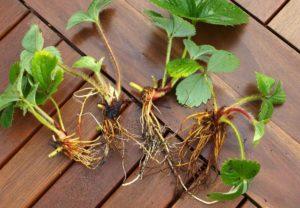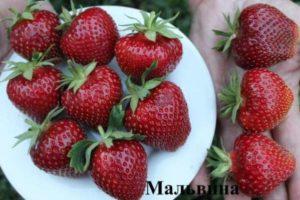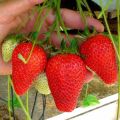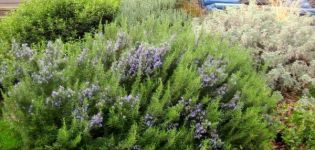Description and characteristics of the Gigantella strawberry variety, planting, growing and care
Garden strawberries develop well and bear fruit when choosing a variety adapted to climate conditions. Southern crops are uncomfortable in mid-latitudes, moisture-loving plants do not take root well and die in arid regions. Although Gigantella strawberries cannot be found in the state registers of many countries of the former USSR, since they are not registered, summer residents and owners buy this particular variety on the markets. Garden strawberry, created in Holland, attracts with large berries, high yield.
Description and characteristics of strawberries
Gigantella appeared in the 80s of the last century thanks to the work of Dutch breeders, quickly attracted the attention of European and American farmers, but later they stopped growing such strawberries on an industrial basis. Maxim is considered the closest relative of this variety and has similar, but slightly improved characteristics.
Bushes
An adult strawberry has a diameter of about 60 cm and grows up to half a meter in height. The roots of garden strawberries are fibrous and strong, leaving behind other varieties in size. On powerful bushes that form a large number of mustaches, tall flower stalks appear. An ovary is laid on them.
Strawberries with wide shiny leaves grow very quickly, the root system takes up a lot of space.
Berries and flowers
The largest first fruits weigh from 80 to 100 g, but the next strawberry grows in mass not exceeding 50 grams. Berries delight:
- juicy pulp;
- bright shade;
- garden scent;
- with a pineapple flavor.
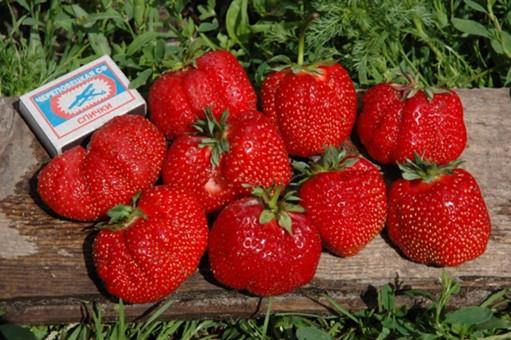
The Maxim variety is distinguished by long-term fruiting, strawberries are tied on large peduncles, which keep the berries from contact with the ground.
Strawberry yield
The fruits of the variety in mid-latitudes do not ripen in early terms, but in early July. Subject to agricultural technology, using the correct irrigation system, about 2 kg of berries can be picked from the bush, but usually summer residents harvest a lower yield. Strawberries - not remontant, bears fruit only once per season, but amicably.
Transportability
Dense berries of garden strawberries do not crumple, do not lose their presentation after transportation over a long distance, without processing they are stored in the refrigerator for up to a week, when frozen they do not lose their pleasant taste.
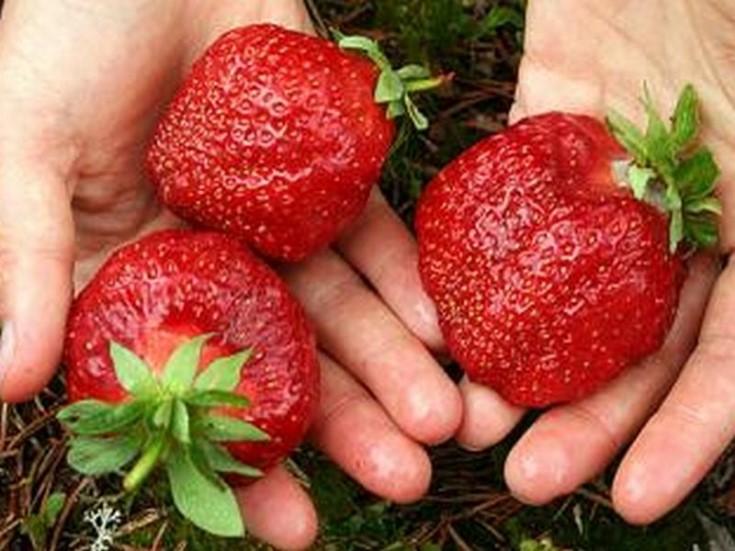
Advantages and disadvantages of Gigantella
European farmers abandoned the cultivation of a late-ripening variety due to the fact that strawberries are not immune to diseases, attract pests, and require special agricultural technology. But Gigantella has many advantages:
- long and friendly fruiting;
- stable and high yield;
- attractive and large berries;
- good transportability;
- excellent commercial qualities.
The disadvantage of the Dutch variety is that the strawberry does not tolerate winters in regions where there is severe frost and there is no snow.
Breeding options
Having several bushes of this garden strawberry, you can breed it on the site.
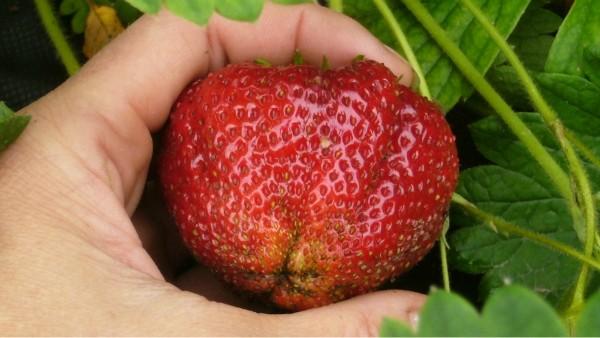
Seeds
Strawberries cannot be propagated using seed, since small grains are pollinated, the varietal properties and characteristics of the plant are not preserved.
Mustache
Both early and late ripening strawberries form shoots on which rosettes of leaves are formed. They take root and grow. One Gigantella bush gives 10 whiskers, of which the strongest are left, and in order for them to develop, they cut off the peduncles. In July, the grown plants are transplanted to another place, so that they grow stronger before winter and acquire buds.
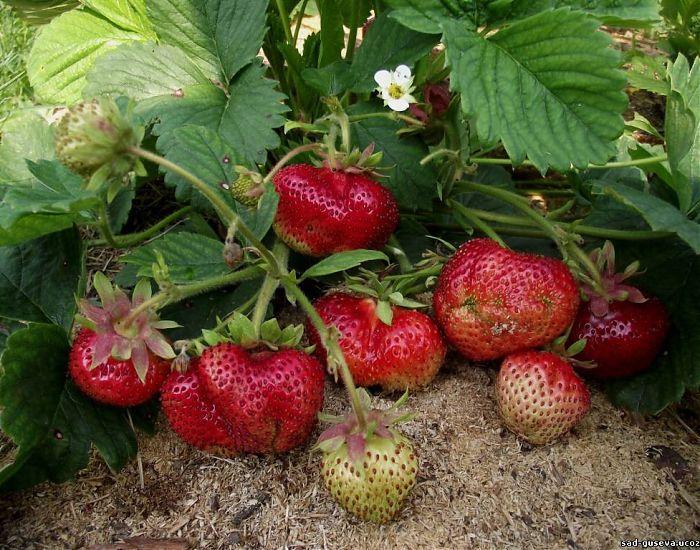
The three-year-old Gigantella mustache gives little, but forms a large number of horns, which are used for breeding the variety.
By dividing the bush
You can dilute Gigantella on the site in another way. For this, strong plants with a heart are selected at the age of 3 years. Older strawberries develop woody stems from which you should not expect a harvest.
Selected bushes need to be divided into 3 or 4 parts with roots and at the end of July each should be planted in a garden bed.
How to grow a variety correctly
Gigantella has characteristics that must be considered before breeding it. Strawberries give a good harvest subject to agricultural techniques, abundant watering, and proper feeding.
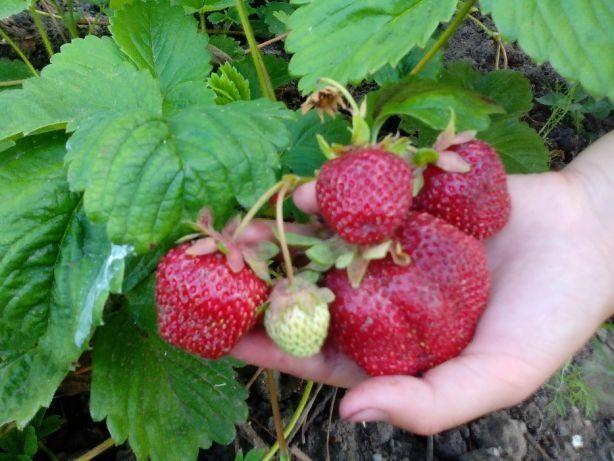
When and where to plant a berry
The site for Gigantella is allocated in a place where there is a lot of sun, and the rays shine on the garden for at least 10 hours a day. A prerequisite for fruiting is good ventilation; water should not stagnate in the soil. Strawberries love loose soil, feel comfortable on loam, and bear fruit normally on sandy loam. On acidic soils, the variety is grown only after liming and applying organic fertilizers.
Gigantella is planted in May, when the average temperature reaches 16 ° C, and frosts should not return, as well as in July and August.
The best predecessors for strawberries are:
- green manure and mustard;
- beans and parsley;
- peas and garlic.

Agronomists advise growing berries after cereals. The best place for breeding strawberries is considered to be the area that was set aside for fallow last season.
Soil preparation
Before planting, Gigantella remove weeds, remnants of roots and stems. The earth is dug up, leveled, fertilized with peat and humus. It is not recommended to add nitrogen immediately.
Planting seedlings in open ground
Gigantella should be placed next to other large-fruited strawberries, since they have the same agricultural technology, pollination occurs better. 4 bushes are planted per square meter, given that strawberries grow very much. The roots are soaked in a growth promoter and placed vertically in each hole, which is fertilized with manure or compost, ash is placed, covered with earth and watered. One plant needs at least 0.5 liters of water. The soil must be mulched with straw or sawdust so that the moisture does not erode. Between the rows, leave from 50 to 70 cm.
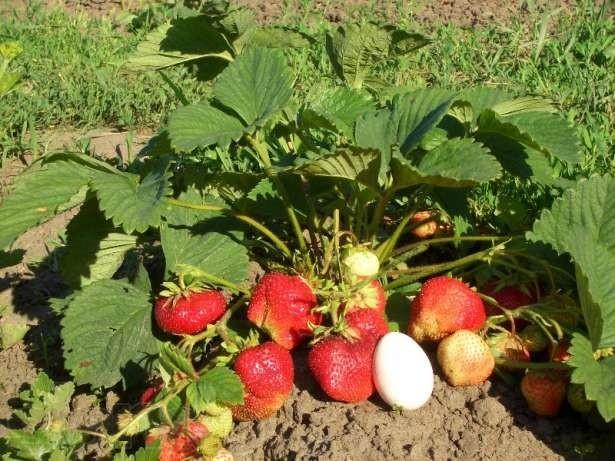
Further care of strawberries
Gigantella bushes grow quickly, like other varieties, they need additional feeding, they love moisture.
Loosening
Strawberries planted outdoors should be weeded out to prevent weeds from drowning them out. The variety does not tolerate heavy soil; after rains and watering, the soil must be loosened.
Mulching
It is enough to irrigate the garden once a week. To prevent moisture from evaporating, cover the soil under the bushes:
- straw;
- hay;
- sawdust;
- agrofibre.
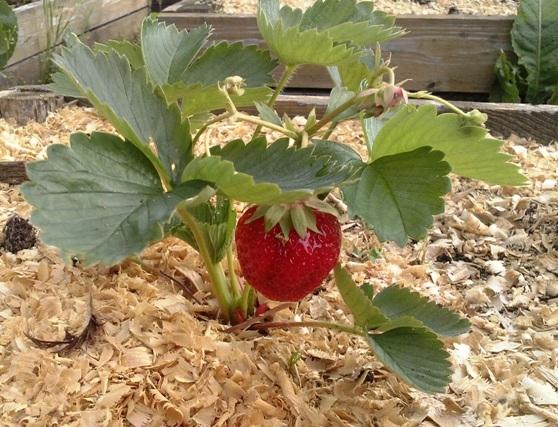
Mulching allows you to water the strawberries less often, as it retains moisture and prevents weeds from growing. The bushes are covered with the same material for the winter.
Fertilizers
Gigantella is fed several times per season, always in spring, during flowering, when the ovary appears. Organic and mineral complexes are used for feeding. In the second option, the dosage must be strictly observed, an excess of chemicals leads to the fact that the leaves burn out, the berries fall off. With a shortage of fluoride, magnesium, calcium, phosphorus and other nutrients, a decent harvest should not be expected.
The seedlings are advised to be fed only with mineral fertilizers, for adult bushes they are combined with organic matter - humus, bird droppings, compost, ash.
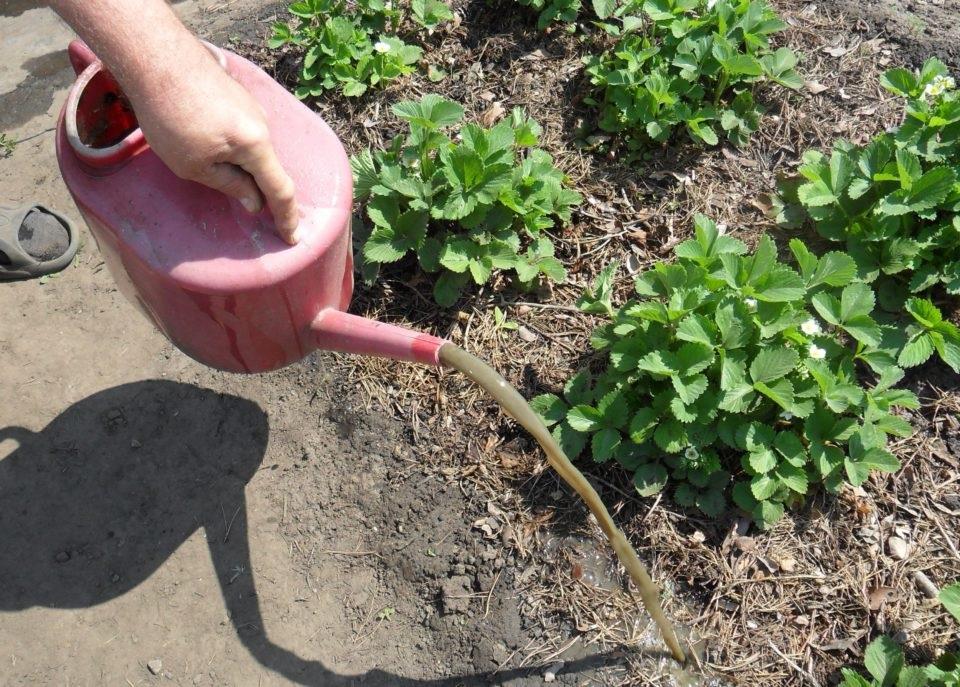
Mustache
Gigantella, like many other varieties of strawberries, after flowering forms shoots with rosettes of leaves, which begin to grow rapidly during the ripening period of the berries. The whiskers take nutrients from the mother bush, thicken the beds, as a result of which ventilation worsens, pathogens of rot and powdery mildew are activated.
The mustache is cut off with pruning shears or scissors; the strongest shoots are left for reproduction.
After fruiting
To make strawberries happy with the harvest, you need to take care of the plants in spring and autumn, and after finishing picking berries. In July, new leaves begin to grow in the bushes, horns are formed, buds are laid on which flowers are formed. At this time it is necessary:
- Trim the mustache.
- Cut out the weeds.
- Remove dried parts.
- Hilling bushes and aisles.
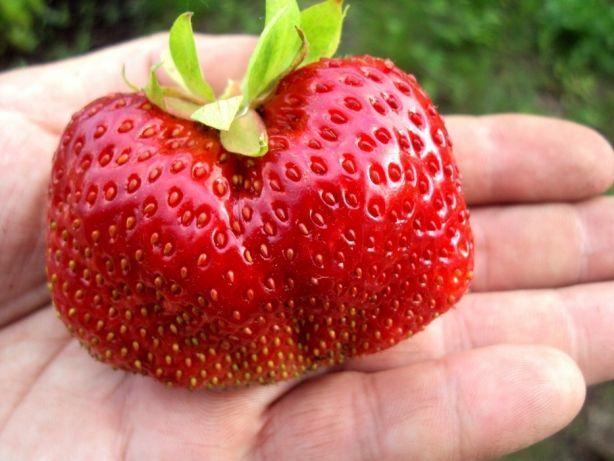
Ammophoska is applied under strawberries, fertilizer is embedded to a depth of 50-60 mm. When feeding, you must ensure that the roots remain in the ground.
Disease and pest control
Gigantella often suffers from gray rot. If a plaque appears on the fruits and leaves, the affected plants are dug up by the root, and the whole garden bed is sprayed with Fitosporin. Strawberry is sick with chlorosis, feeding with formulations in which iron is present helps to cope with the problem. To prevent the activation of microorganisms that cause powdery mildew and rot, in the spring the beds are treated with Bordeaux liquid.
If the rules of agricultural technology are not followed, strawberries start:
- slugs;
- bear;
- beetle larvae.
Scares off pests onion husks, garlic infusions. The parasites do not like the smell of calendula, parsley, marigolds. When aphids, wireworms, spider mites appear, the beds are treated with insecticides.
